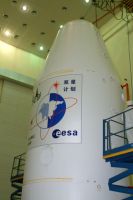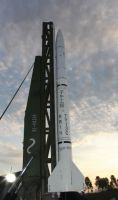
Categories
- Aircraft, Helicopter, UAV, Spacecraft & related equipment
- Radar, Sonar, Navigation, Targeting, Surveillance
- Services (R&D, training, engineering, consultancy, …)
The NATIONAL SPACE SCIENCE CENTER (NSSC) of the Chinese Academy of Sciences (CAS) is China’s gateway to space science. It is the key institute responsible for planning, developing, launching and operating China’s space science satellite missions. It also spearheads space science research in the fields of space physics, space environment, microwave remote sensing, space engineering technology, etc.
Established in 1958 by CAS, NSSC soon dedicated itself to developing China’s first artificial satellite, Dongfanghong-1(DFH-1). From 1958 to 1968, NSSC designed, developed and tested DFH-1, paving the way for its successful launch on April 24, 1970.
NSSC was in charge of application systems for China’s Manned Space Flight Program from 1992 to 2003. It also initiated and acted as a lead institute for scientific application and payload development for the Martian Space Environmental Exploration Orbiter (YH-1). Since 2004, NSSC has played an indispensable role in developing the scientific payload subsystem for China’s lunar exploration program.
As early as 1997, NSSC proposed the Geo-space Double Star Exploration Program (DSP), a Sino-European project in which two satellites carried out research on magnetic storms from 2004 to 2007. The successful program, which was undertaken in cooperation with the European Space Agency (ESA)’s Cluster Program, was China’s first space science satellite mission and its first large-scale international space science project. DSP was also the first program in human history to realize six-point measurements in geo-space, in this case, dynamic measurements of the Earth’s magnetosphere.
NSSC has also advanced space technology to support other science programs. For example, space environment and remote sensing payloads developed by NSSC are now on board Chinese application satellites, such as the FY and HY series.
NSSC has also developed the Meridian Project, which comprises of a ground-based space environment monitoring, as well as a station in Antarctica. The monitoring network is now extended north to Russia, south to Australia, and to the other side of the globe along the 60-degree West longitude, as part of the International Space Weather Meridian Circle Program. NSSC is now in charge of CAS’s Strategic Pioneer Program on Space Science, which will launch four scientific satellite missions in the following year, i.e., the Hard X-ray Modulation Telescope; Quantum Experiments at Space Scale; Dark Matter Particle Explorer; and ShiJian-10.
NSSC has a staff of 680 professors and associate professors. NSSC is the home of the National Key Laboratory of Space Weather, two CAS key laboratories, one Russia-China Joint Research Center on Space Weather, as well as a rocket launch site in Hainan Province.
National Space Science Center (NSSC)
- No. 1 Nanertiao, Zhongguancun, Haidian District, Beijing, China, P. R.
- +86-10-6256 0947
- +86-10-6257 6921
- contact@nssc.ac.cn
- http://english.nssc.cas.cn




